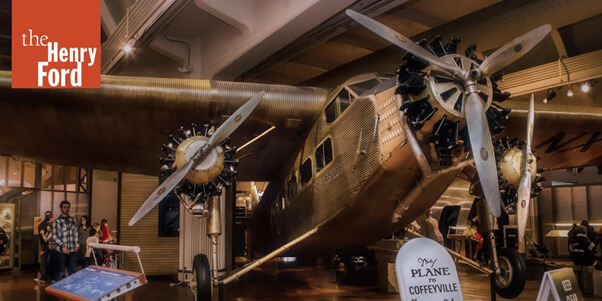Updated May 26, 2023
Introduction to Henry Ford Museum
The Henry Ford Museum is a remarkable treasure of American culture. The museum opened in 1929 in the Detroit suburb of Dearborn, Michigan. The Henry Ford Museum of American Innovation is divided into the Indoor section and the open-air Greenfield Village. All the exhibits and items displayed in the museum are arranged in different rooms. The Greenfield Village houses several restored old buildings, including Thomas Edison’s research lab and the Wright Brothers’ airplane workshop. Each show has a detailed description given by the museum guides.
History of Henry Ford Museum
Henry Ford, one of America’s most successful businessmen, gained renown for inventing the assembly line mode of manufacturing, which revolutionized the automobile industry. He had a lifelong passion for collecting and amassing many items, including clocks, machines, and ancient books. As his wealth grew, so did his collection. Ford was interested in acquiring artifacts that portrayed everyday Americans’ stories and showcased America’s technological advancements.
What began as a personal collection got so vast that he had to build a museum to store it. The Edison Institute, named after his idol, debuted in June 1929. It was first opened to the public in 1933 with Henry Ford Museum. The museum continues to attract Americans and now houses a vast collection of 26 million artifacts.
Exhibits in the Henry Ford Museum
The Henry Ford Museum of American Innovation is divided into two exhibition areas. They are:
1. Greenfield Village
In Greenfield Village, the organizers have divided into seven outdoor zones that consist of reconstructed and restored historic buildings from various locations across the country. They relocated nearly a hundred ancient buildings from their original sites and placed them within the “village” environment of Greenfield Village. The museum’s goal is to depict how Americans have lived and worked since the nation’s birth, and the Village contains structures from the 17th to the present day.
The various exhibits here include:
- Noah Webster’s Connecticut residence functioned as a hostel for Yale scholars from 1918 until 1936, when Henry Ford purchased it and relocated it to Greenfield Village, where it was renovated.
- Replica of Thomas Edison’s Menlo Park research lab: They took inspiration from Edison’s New Jersey lab and commenced the restoration of the structures in 1928. The design of the buildings was based on precise foundation dimensions from the original site.
- The Wright Brothers’ workshop: Henry Ford purchased and relocated the Wright Brothers’ workshop and residence from Dayton, Ohio, in 1937.
- The Cape Cod Windmill: Also recognized as the Farris mill, the Cape Cod windmill is one of America’s oldest windmills. Before being given to Henry Ford by the Ford Dealers Association and restored in Greenfield Village in 1936, it underwent multiple relocations across Cape Cod.
- Henry Ford’s birth home was relocated 1944 from Greenfield and Ford roads. Henry Ford had it equipped just as his mother had it in her time.
2. The Indoor Henry Ford Museum of American Innovation
The Indoor portion exhibits a variety of artifacts. Most of these are associated with famous American personalities or historical events in America.
The exhibits here include:
- With Liberty and Justice For All: This iconic exhibit showcases incredible artifacts, including Abraham Lincoln’s assassination chair, the presidential limo in which Kennedy was killed, and the bus Rosa Parks refused to give up her seat.
- Driving America: Some of the oldest American cars, including the 1865 Roper and a hybrid 2002 Prius, are displayed here.
- Railroads: Railroads displays the history of railways in the US. Some of the iconic displays here include the Allegheny Locomotive and Fairlane Railcar.
- What we wore: Witness the wide range of clothing and accessories owned by Henry Ford and the exciting stories behind every clothing item.
The museum guides at the Henry Ford Museum of Innovation dress in costumes and actively engage visitors with detailed descriptions of all the exhibits. You can also watch an 1867 baseball game, drive a Model T vehicle, or register in a one-room, 1870s-style classroom within the museum.
Conclusion
The Henry Ford Museum of American Innovation brings visitors face to face with America’s creativity and culture over the years. The Henry Ford Museum, a National Historic Landmark with an extraordinary collection of artifacts spanning 300 years of American history, is a driving force in stimulating curiosity and motivating the youth and tomorrow’s innovators.



